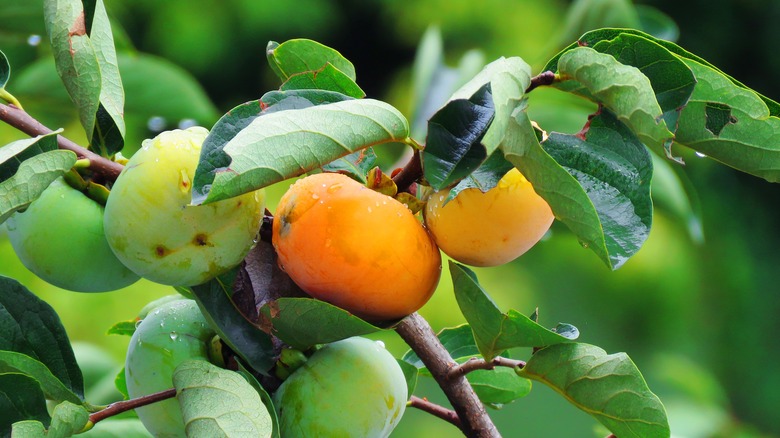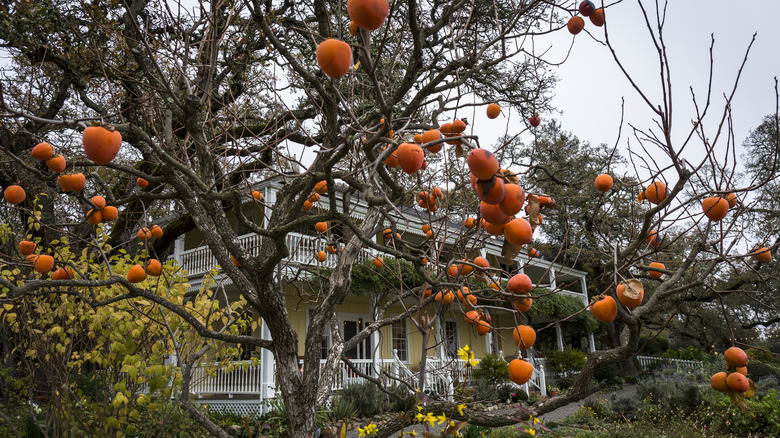How To Germinate And Grow A Persimmon Tree From Seed
Persimmons are mouthwatering fruits with a unique taste and texture that merges sweetness with astringency. If this odd blend of flavors electrifies the pleasure centers of your brain any time you come across a persimmon, why not consider growing a tree at home? That's right, you can grow these fruit trees quite easily from seeds in most USDA zones. The native persimmon (Diospyros virginiana) grows in the regions bounded by the Atlantic coast to the east, Iowa to the west, and Texas to the south, spanning USDA zones 4a to 9b. Its yummier and less astringent non-native cousin, the Oriental persimmon (Diospyros kaki), hails from East Asia but has made a home in the U.S. for over a century now. This variety is only hardy in zones 7a to 10b, so you can try growing it as well if you live in the nation's warmer regions.
The trick to getting a persimmon seed to germinate is to recreate its natural pre-germination conditions, in which the fruit seeds need a chilling period before leaving dormancy and sprouting. This process is called seed stratification. To stratify in a home environment, you'll need a bit of patience, so don't expect the persimmon seeds to germinate quickly. Also, note that growing seeds from store-bought fruit may not produce a tree that's true to its parent. Finally, you'll have to grow several trees if you hope to ever have fruit — that's because persimmon trees are dioecious, meaning that one tree will have either male or female flowers and flowers of both sexes are needed to bear fruit. Below, we'll explain how to create the best conditions for germinating and growing these uncommon fruit trees from seed.
Steps for germinating a growing a persimmon tree from seed
Start by soaking the persimmon seeds in water for several days. This water bath allows any caked-on flesh to come loose and drop off the seed. Next, you'll need to stratify the seeds. To do this, find a suitable container, such as a jar or a sealable food storage bag. Line the container with wet paper towels, put the seeds between them, and place the container in the fridge. You'll need to give the seeds a full three months in the refrigerator to imitate the natural winter conditions. That said, it's not a set-it-and-forget-it kind of affair. The towels may dry out, so check on the seeds weekly and moisten the towels as needed.
If the seeds have sprouted in the fridge, place them on a new, moist paper towel inside an opened plastic bag and leave the bag out in a sunny location. Then, insert the seeds into the seedling container with the germination medium once the seedlings reach about an inch in length. However, if no sprouts appear after three months of stratification, place the seeds on a wet towel and seal them in a plastic Ziploc bag, then leave them out in the sun. The seeds should finally sprout in about two weeks' time, and you can plant them in the germination container.
Keep the saplings indoors in a container for at least a year before you transplant them out into the yard. When transplanting, take care not to disturb the trees' delicate taproot system. Make sure the outdoor location provides the persimmon trees at least six hours of full sun daily (although the native variety will tolerate partial shade). Keep the soil somewhat moist but not soggy; however, generally, the trees will need little maintenance once they're established.

